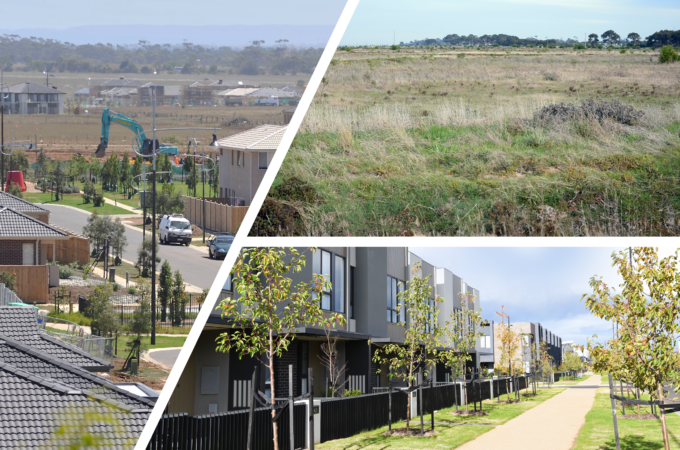
07/11/2024
Planning in areas that include potential Victorian Grassland Earless Dragon habitat
In January 2023, the critically endangered Victorian Grassland Earless Dragon (VGED) was rediscovered in a location west of Melbourne. It was the first time the species had been sighted in more than 50 years, and it was previously considered likely to be extinct.
Since the rediscovery of VGED, the Victorian Department of Energy, Environment and Climate Action (DEECA) has been working with the Commonwealth Department of Climate Change, Energy, the Environment and Water (DCCEEW) to confirm its habitat distribution and how to undertake surveys for the VGED.
The Victorian Planning Authority (VPA) now has clear guidance on how to progress planning for current Housing Statement projects and other plans while protecting VGED habitat.
How to identify if your land has likely VGED habitat?
DEECA has updated their VGED Habitat Distribution Model (HDM) map (PDF).
The VGED HDM is one of several tools to help planners, developers and decision-makers identify potential location of VGEDs and consider the potential impacts of land use changes on the species.
For any queries regarding the mapping, please refer to the DEECA webpage.
If my land is shown in the DEECA VGED HDM as having likely habitat, what is the survey method?
The Commonwealth DCCEEW has published survey guidance to support field surveys related to VGED.
DCCEEW has released this guidance in advance of release of the National Recovery Plan for the Four Grassland Earless Dragons of Southeast Australia, including VGED, to provide certainty to industry.
For any queries regarding compliance with the Commonwealth Environment Protection and Biodiversity Conservation Act 1999, please refer to the DCCEEW webpage
What does this mean for VPA projects?
All current VPA projects with VGED habitat have a confirmed delivery pathway and advice has been provided to landowners.
VGED habitat is protected under both Victorian and Commonwealth law and proponents are required to meet their compliance obligations under both jurisdictions.
In its planning process, the VPA will continue the current practice of ensuring that plans investigate and seek to protect important habitat (including VGED). The making of a plan by the VPA does not involve or require referral to the Commonwealth.
Landowners within precincts being planned by the VPA will continue to be responsible to:
Within the Melbourne Strategic Assessment (MSA) area:
- comply with MSA requirements
Outside the MSA area:
- implement the standard practice of completing field surveys for any matters regulated by the Commonwealth (including VGED).
- The VPA will use this mapping to inform our structure planning and proponents are responsible for undertaking a self-assessment to determine if a referral is required to the Commonwealth before development can proceed.
If you require further information, please contact Chris Renkin, Director Regional Victoria at the VPA, at Chris.Renkin@vpa.vic.gov.au
For more information
- For questions about how VGED is being planned for in the VPA’s current planning projects, please contact the responsible planning manager at the VPA, or Chris Renkin, Director Regional Victoria, at Chris.Renkin@vpa.vic.gov.au.
- For questions about the Habitat Distribution Modelling mapping or compliance with the Melbourne Strategic Assessment see Planning requirements for conservation areas (msa.vic.gov.au)
- For questions about compliance with the Commonwealth Environment Protection and Biodiversity Conservation Act 1999 please see the DCCEEW Survey guidelines for four Grassland Earless Dragons (Tympanocryptis spp.) of Southeast Australia.
- For questions about the survey methodology, refer to the Zoos Victoria webpage.
- For questions about the determination of planning permits in VGED-effected areas please contact your local council.
